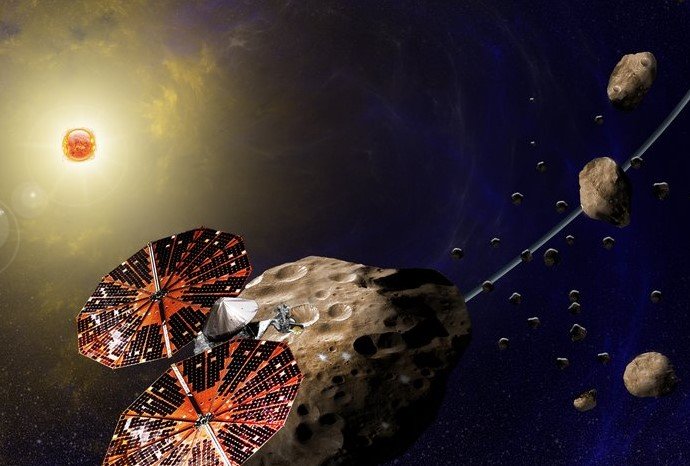NASA has issued a warning about two sizable asteroids making their way toward Earth on December 21, 2024. These celestial bodies, identified as 2024 XQ4 and 2024 XN15, will come incredibly close to our planet, sparking interest among astronomers and space enthusiasts. However, NASA assures that there is no threat to Earth, as these asteroids do not meet the criteria for potentially hazardous objects.
Both asteroids are closely monitored by NASA, which uses state-of-the-art technology to track their paths and predict their closest approach times. While the encounter is relatively close by astronomical standards, there is no cause for concern.
Asteroid 2024 XQ4: A Close Call at 47,634 km/h
The first asteroid, 2024 XQ4, is roughly 50 feet in diameter, about the size of an average house. It is set to pass Earth at a blistering speed of 47,634 kilometers per hour, which is fast enough to make most of us dizzy just thinking about it. Despite its speed, the asteroid will be 1,060,000 kilometers away from Earth at its closest point, which is relatively close in the vast expanse of space.

This close encounter will occur at precisely 3:03 PM IST. While the speed and proximity may sound alarming, rest assured that NASA has verified that there is no risk of impact. The asteroid’s size and trajectory mean it poses no danger to our planet.
Here are the specifics of 2024 XQ4’s approach:
- Size: 50 feet (about the size of a house)
- Speed: 47,634 km/h
- Closest Distance to Earth: 1,060,000 km
- Time of Closest Approach: 3:03 PM IST on December 21, 2024
Asteroid 2024 XN15: A Larger Visitor
The second asteroid, 2024 XN15, is a bit larger, measuring around 60 feet in diameter. It is also house-sized, though not massive by cosmic standards. It will pass Earth at a speed of 35,051 kilometers per hour, much slower than 2024 XQ4 but still fast in relative terms.
The asteroid will come even closer than 2024 XQ4, reaching its closest point at a distance of 3,780,000 kilometers. While this distance is still far by human standards, it is relatively near in terms of the vastness of space. Its closest approach is scheduled for 2:38 PM IST on December 21, 2024.
Details about 2024 XN15:
- Size: 60 feet (a bit larger than 2024 XQ4)
- Speed: 35,051 km/h
- Closest Distance to Earth: 3,780,000 km
- Time of Closest Approach: 2:38 PM IST on December 21, 2024
Why These Asteroids Pose No Threat to Earth
Both 2024 XQ4 and 2024 XN15 are being closely tracked by NASA, and although they are passing relatively close to Earth, they are not considered a risk. NASA has clarified that an object must meet certain criteria to be classified as a “Potentially Hazardous Object” (PHO). For an asteroid to be classified as a PHO, it must be larger than 150 meters in diameter and must come within 7.5 million kilometers of Earth.
Given that both of these asteroids are much smaller and will not come anywhere near the 7.5 million-kilometer threshold, there is no risk of collision. These asteroids, while significant in size, simply do not meet the criteria for concern.
How NASA Tracks Near-Earth Objects (NEOs)
NASA uses a combination of ground-based and space-based telescopes to monitor Near-Earth Objects (NEOs). The Catalina Sky Survey, located in Arizona, is one of the primary ground-based facilities used for asteroid detection. NASA’s space observatories, including NEOWISE, also play a key role in tracking and analyzing asteroids as they approach Earth.
Through these advanced monitoring systems, NASA can precisely predict the trajectories of asteroids and make real-time adjustments to their projected paths. This ensures that any potential risk to Earth is identified early, allowing scientists to take action if necessary.
In addition to their work tracking near-Earth objects, these observatories also gather valuable data about the composition and behavior of asteroids, contributing to our understanding of these fascinating celestial bodies.
